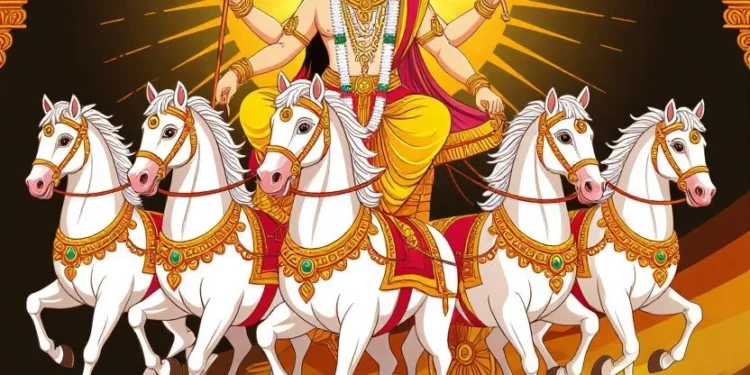Khir Khane Din is a special day celebrated in many parts of Nepal and India, where families come together to enjoy a traditional sweet dish called khir (rice pudding). This day is not only about the delicious taste but also about honoring ancient traditions and the deep cultural roots that bind generations.

In this post, we will explore the history, cultural significance, preparation, regional variations, and the joyful customs associated with Khir Khane Din. We will also answer some frequently asked questions to help you understand the tradition better.
Table of Contents
1. Introduction to Khir Khane Din
Khir Khane Din literally means “The Day of Eating Khir.” It is a day devoted to preparing and eating khir, a sweet milk and rice dessert, which is a symbol of purity, happiness, and prosperity in many South Asian cultures.
The Essence of Khir Khane Din
Every culture has its unique festivals and food rituals. Khir Khane Din is an example of how food and tradition come together to create a meaningful celebration. On this day, families prepare khir with great love and care. The dish is offered to gods and shared with family and friends. Eating khir on this day is believed to bring good luck, health, and prosperity.
Why Khir?
Khir is not just a dessert; it holds spiritual and emotional significance. It symbolizes sweetness in life, the importance of family bonds, and the blessings of the divine. Khir is rich, creamy, and comforting, making it the perfect food to celebrate joyous occasions.
2. Historical Background of Khir Khane Din
The tradition of Khir Khane Din is deeply rooted in ancient South Asian culture and religious practices. Its history is connected to Hindu rituals and the agricultural cycle.
Ancient Origins
The earliest references to khir can be found in ancient Hindu scriptures and epics. Khir was offered to gods during religious ceremonies as a sign of devotion. It is mentioned in texts like the Ramayana and Mahabharata, where it was served during celebrations and sacred rituals.
Agricultural Significance
Khir Khane Din is often linked to harvest festivals. In many rural communities, the day marks the end of a successful harvest season. Preparing khir using fresh milk and rice from the new crop is a way of thanking nature and the gods for their bounty.
Connection with Other Festivals
In Nepal and India, Khir Khane Din coincides or is closely related to other festivals such as Makar Sankranti, Maghe Sankranti, or Lohri, depending on the region. It represents a collective cultural practice of celebrating abundance and new beginnings.
3. Cultural Significance of Khir Khane Din
More than just a food festival, Khir Khane Din carries profound cultural and social meanings. It fosters community bonding, family togetherness, and spiritual well-being.
Spiritual Importance
In Hindu belief, offering sweet food like khir to gods is an act of devotion. On Khir Khane Din, many families prepare khir as a prasad (holy offering) and distribute it among family members, friends, and neighbors, symbolizing blessings and goodwill.
Family and Community Bonding
The preparation and sharing of khir bring families together. Relatives visit each other’s homes, share stories, sing traditional songs, and enjoy the festive atmosphere. It strengthens relationships and promotes social harmony.
Preservation of Tradition
In an era of fast food and instant gratification, Khir Khane Din reminds us of the importance of preserving traditional recipes and rituals. It is a day to pass on culinary skills and cultural values to younger generations.
4. The Recipe: How to Prepare Traditional Khir
Making khir is an art that requires patience, love, and the right ingredients. Let’s explore the traditional way to prepare this delicious sweet dish.
Ingredients
Rice (preferably short-grain or basmati)
Full-fat milk
Sugar or jaggery
Cardamom powder
Nuts (almonds, cashews, pistachios)
Saffron (optional)
Raisins (optional)
Preparation Steps
Washing the Rice: Clean and soak rice for about 30 minutes to an hour.
Boiling the Milk: In a heavy-bottomed pot, boil milk on medium heat. Stir often to avoid burning.
Cooking the Rice: Add soaked rice to the boiling milk and cook on low flame. Stir occasionally to prevent sticking.
Adding Sweetness and Flavor: When the rice is soft, add sugar or jaggery and cardamom powder. Continue cooking till the mixture thickens.
Nuts and Saffron: Add chopped nuts and saffron for aroma and texture.
Cooling and Serving: Serve warm or chilled as per preference.
Tips for Perfect Khir
Use fresh, full-fat milk for richness.
Stir continuously to prevent the milk from sticking to the bottom.
Adjust sweetness according to taste.
Experiment with different nuts or dried fruits.
5. Regional Variations of Khir and Celebrations
Khir Khane Din is celebrated differently across various regions, each adding its unique flavor and customs.
Nepal
In Nepal, Khir Khane Din is a prominent celebration in many ethnic communities, especially among the Newar and Madhesi groups. The dish is often made during festivals like Maghe Sankranti, and families gather to enjoy the sweet treat together.
India
In India, different states have their versions of rice pudding like kheer, payasam, or phirni. For example, in Bengal, payesh is prepared with a slightly different method. Khir Khane Din may coincide with Makar Sankranti or other local harvest festivals.
Bangladesh and Pakistan
Similar rice pudding dishes are prepared and shared during festive occasions, although the specific day of Khir Khane Din may vary or not be distinctly celebrated.
Regional Customs
In some places, people feed khir to cows and other animals as a part of gratitude rituals. In others, children receive gifts or blessings after eating khir. These customs reflect the diversity of traditions tied to this sweet dish.
6. The Role of Khir Khane Din in Family Traditions
Family is the core of Khir Khane Din celebrations. This day is often seen as an opportunity to reconnect with loved ones and honor elders.
Honoring Elders
On Khir Khane Din, younger family members seek blessings from elders. Serving khir to grandparents and parents is a mark of respect and gratitude. It is common for elders to share stories about past celebrations, enriching the experience.
Passing Down Recipes
Grandmothers and mothers often pass down their secret recipes to the younger generation on this day. It is a moment of teaching and learning that preserves the culinary heritage.
Strengthening Bonds
Families often host gatherings, inviting relatives and neighbors. The act of sharing khir symbolizes unity and love. Children learn the value of togetherness and respect for tradition.
7. Modern Adaptations and Innovations
Though Khir Khane Din is rooted in tradition, modern lifestyles have inspired creative twists and innovations.
Fusion Recipes
Some people add fruits like mango or berries to khir for a fresh taste. Others experiment with alternative sweeteners or non-dairy milk for health-conscious celebrations.
Quick Preparation Methods
With busy schedules, instant rice cookers or pressure cookers are used to speed up khir preparation. Ready-made mixes and flavored powders are also available in the market.
Digital Celebrations
During times when families are apart, virtual celebrations via video calls allow sharing the joy of Khir Khane Din remotely. People exchange recipes, photos, and videos online, keeping the spirit alive.
8. Symbolism of Khir: More than Just a Dessert
Khir symbolizes many deeper values in South Asian culture that go beyond its taste.
Sweetness of Life
The creamy, sweet nature of khir represents the sweetness one hopes for in life — happiness, peace, and fulfillment.
Purity and Prosperity
Made from milk and rice, khir is considered pure and auspicious. It is often served during weddings, births, and other major life events as a blessing for prosperity.
Nourishment and Care
Milk and rice are staple foods that nourish the body. Offering khir signifies care, nurturing, and well-being for oneself and the community.
9. How to Celebrate Khir Khane Din in Your Home
If you want to start or continue this beautiful tradition in your home, here are some simple steps to celebrate Khir Khane Din meaningfully.
Planning
Choose the date, often aligning with local customs or harvest festivals. Inform family and friends to join the celebration.
Preparation
Gather fresh ingredients and involve family members in cooking. Share the task of washing rice, stirring milk, and decorating khir.
Rituals
Offer khir as prasad to your family’s deity or altar. You can light candles or incense to create a festive atmosphere.
Sharing
Distribute khir among family, friends, and neighbors. You can also share some with animals like cows, as part of traditional gratitude.
Enjoyment
Sit together and enjoy khir with stories, music, and laughter. Use this day to bond and create new memories.
10. The Future of Khir Khane Din: Preserving Tradition in a Changing World
As societies modernize, traditional celebrations face challenges but also new opportunities.
Challenges
Urban lifestyles and busy schedules may reduce the time families spend together. Younger generations may lose interest in old customs.
Opportunities
With growing awareness of cultural heritage, Khir Khane Din can be promoted in schools and communities. Social media can spread awareness and connect people.
Role of Community
Community centers, cultural groups, and families can organize Khir Khane Din events to keep the tradition alive.
Final Thought
Khir Khane Din represents the beautiful blend of tradition and taste. It is more than a festival — it is a way to connect with our roots, celebrate life, and spread joy.
Frequently Asked Questions (FAQs)
What is Khir Khane Din?
Khir Khane Din is a traditional celebration where people prepare and eat khir, a sweet rice pudding, to honor cultural and religious customs.
When is Khir Khane Din celebrated?
The date varies by region but often coincides with harvest festivals like Makar Sankranti or Maghe Sankranti.
Why is khir important on this day?
Khir symbolizes sweetness, prosperity, and blessings. Eating and sharing khir is believed to bring good fortune and health.
Can I use other grains besides rice to make khir?
While rice is traditional, some variations use vermicelli, barley, or lentils to create similar sweet dishes.
Is Khir Khane Din only a Hindu tradition?
Primarily yes, but similar customs and dishes appear in other South Asian cultures and religions.
How can I make khir healthier?
Use low-fat milk or plant-based milk, reduce sugar, and add fruits or nuts for nutrition.
Can Khir Khane Din be celebrated virtually?
Absolutely! Families can cook and share khir recipes online and celebrate through video calls.
What other dishes are served along with khir?
Depending on the region, other sweets like laddus, halwa, or fruits might accompany khir.
Is khir only served on festivals?
No, khir is a popular dessert year-round but has special importance on certain festive days.
How do I involve children in Khir Khane Din?
Let children help with washing rice, stirring, decorating, and sharing the dish to teach them about culture and family bonding.
Thank you for reading this detailed guide on “Parampara Ra Swad: Khir Khane Din.” May this tradition continue to bring joy, sweetness, and togetherness to your home for generations to come!






